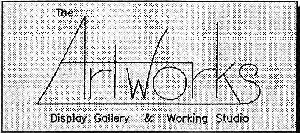
|
The ArtWorks
Sculptures by Clay Hoffman
|
|
| |
|
 Please click here to visit my new website
Please click here to visit my new website
after enjoying these older works.
|
|
 Next Page of Sculptures Next Page of Sculptures
|
|
| |
Sculptures... |
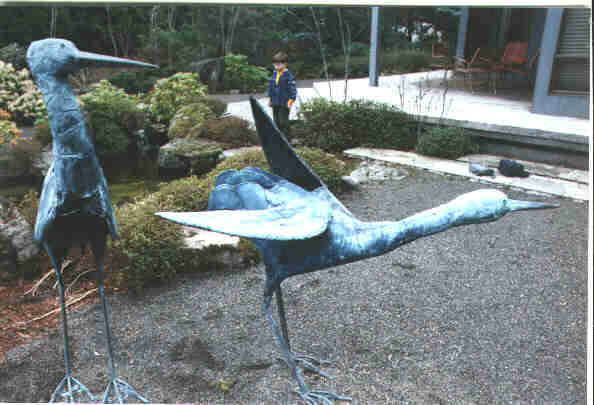
|
|
These are a pair of Japanese Cranes. They were commissioned in 1989 for placement next to a Koi pond. I constructed them out of brass sheet and round stock. When I welded them together, I used an oxyacetylene torch. In a couple spots I used a friend's TIG (tungsten inert gas) welder. The surface has been treated with a nitrate oxide that develops the blue patina.
|
|
| |
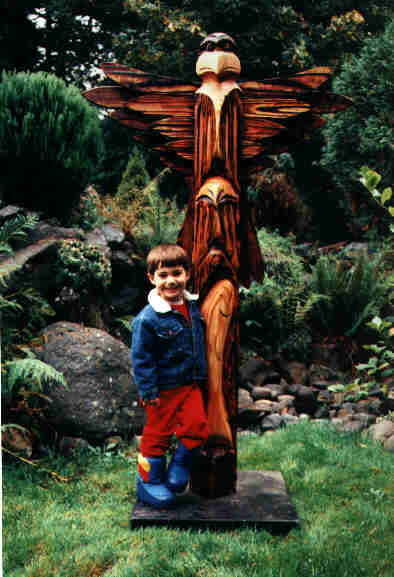
|
As an art form, totem poles are as practical today as they were when they were first created hundreds of years ago. Some of the original poles often depicted a family's emblem or an event from Indian legend. Most of the totems were considered holy and worshiped. Many regarded the totem as their mythical ancestor. The totems that I make also revolve around nature. This totem raises questions about the relationship of a bird of prey to a fish, and our role as good stewards of the Earth.
"Thunderbird" 1995 This totem is made of a recycled 6x6 post and recycled 2x4s. I have sculpted other such posts that have been used in trellises and garden gate entries.
|
|
| |
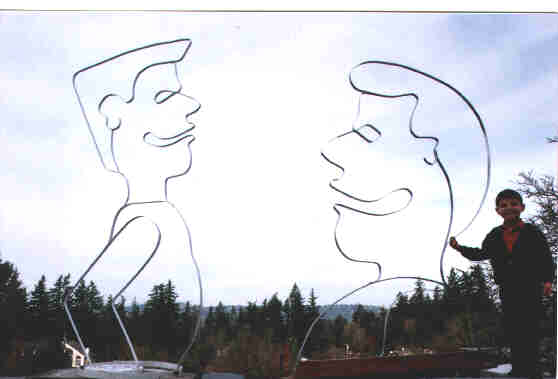
|
|
"Kinetic Conversationalist" 1986 These two charactures were created out of an aluminum flat bar. Using aluminum makes these sculptures very flexible and bouncy. When they are activated by a gentle nudge, or slight breeze they rock back and fourth in a laughing / talking motion. Others that are not yet pictured include a greeter piece with his hand out stretched, when you shake his hand, he gyrates back and forth. Another composition has a man and a women in an embrace. Each of these two sculptures are over eight feet high. Prices on these pieces are very reasonable, but due to their large size shipping can get expensive. These kinetic sculptures are limited to home and garden installations. When they are out in the public not only do children tend to climb on them, but some passer bys are so excited by them that they repeatedly, excessively, shake them till they bend back and forth and ultimately break.
|
|
| |
|
"Wings On The Wind" 1992 This is another one of my IKS ( interactive kinetic sculptures ). When you turn the handle, the Eagles moves up and down with its wings moving in a flapping motion. This sculpture was created out of various metals including: brass, stainless steel, and recycled chain links from motorcycles and forklifts. The Eagle itself was cut out of brass using a CNC (coordinate numeric controlled) plasma cutter. Usually I put the handles up high to child proof them, but this piece was created for a show that was targeted for people with disabilities so every thing had to be accessible from a wheelchair.
|
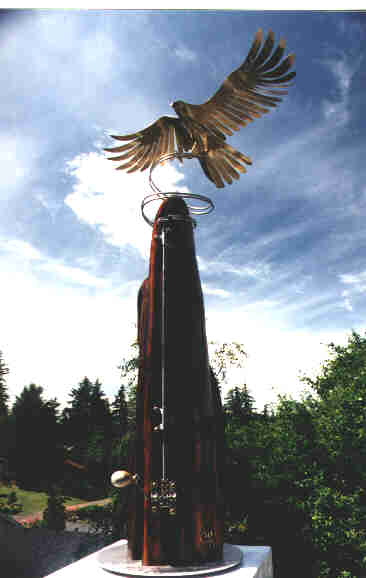
|
|
| |
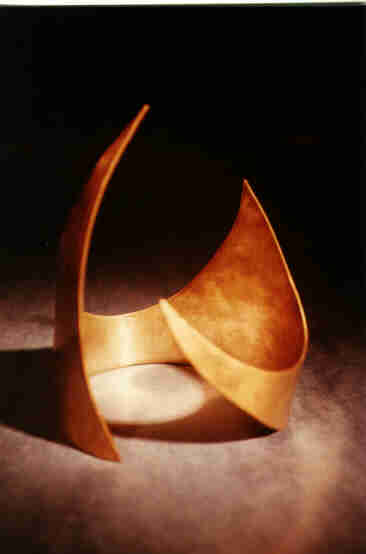
|
"Implied Ellipse" 1984 This name comes from the circular negative spaces that are created by the curvilinear shape. This sculpture was formed from a sheet of 1/8th inch thick bronze. I like to practice what is referred to as "direct metal sculpting". Just as the name implies you work your raw materials directly. Direct metal sculpting is not for everyone, or every project - some pieces must be cast at a foundry. I like working direct over casting because the sculpture usually gets completed faster at a lower cost.
|
|
| |
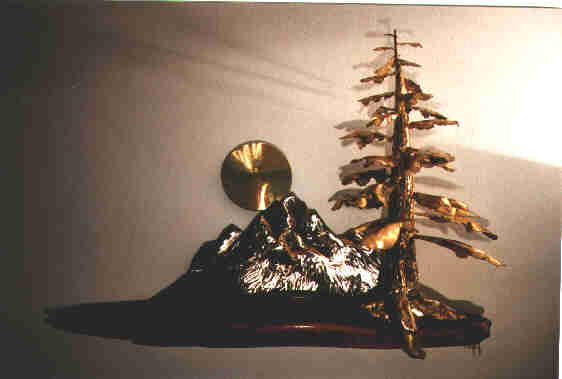
|
|
"Lone Fir" 1993 People here in the Northwest love their trees. In this sculpture we have Oregons state tree the Doug Fir in front of another one of Oregons treasures Mount Hood. The base is made from a piece of drift wood I found near Mount Saint Helans. The tree is brass, the moon is copper and the mountain is ground steel to look like snow with rocky details accented with bronze. |
|
| |
|
| |
|
Artist Statement/thought of the day
I have often been asked if I think being an artist is a product of your nurturing or your particular nature. In my opinion I feel it is a mixture of both. By nature, most of us have the manual dexterity where we can easily preform daily tasks. To train and condition our bodies, and minds to do more, as in a sport or in the arts, takes practice and discipline. I believe the lions share of creativity comes from the nurturing of an analytical art aesthetic. After extensive studying and research, you should build up a personal dialog, so when you look at an art object, you begin to evaluate it on different levels. Why do I like this piece? What does it say to me? What part of the artwork works for me and which parts do not. There are indeed formulas and compositions of balance and color that can make an artistic endeavor successful. As we go through our lives, living and learning, we discover more about ourselves, our environment, and our art. It is during this process, that the art will develop from your previous ground work.
The art work you have seen on this page is a small sampling of what I have created over the past 25 years of sculpting. I will continue to add more pictures as I have old photos scanned and new sculptures photographed. I have sculpted with just about ever material you can think of, my subject matter and sculpting techniques are also equally varied. The only constant in my art is that it is all very different. It is this never ending exploration of creating new designs that keeps the art making process interesting and challenging. Enjoy your life, enjoy your art.
|
|
| |
|
| |
|
|
| |
|
| |
|
|